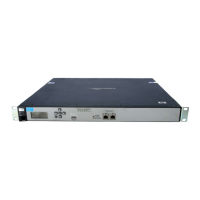Network configuration
IP routes
3-28
Configuration
To view and configure IP routes, select Controller >> Network > IP routes.
Active routes
This table shows all active routes on the controller. You can add routes by specifying the
appropriate parameters and then selecting Add.
The routing table is dynamic and is updated as needed. This means that during normal
operation the controller adds routes to the table as required. You cannot delete these system
routes.
The following information is shown for each active route:
Interface: The port through which traffic is routed. When you add a route, the controller
automatically determines the interface to be used based on the Gateway address.
Destination: Traffic addressed to this IP address or subnet is routed.
Mask: Number of bits in the destination address that are checked for a match.
Gateway: IP address of the gateway to which the controller forwards routed traffic
(known as the next hop).
An asterisk is used by system routes to indicate a directly connected network.
Routes cannot be manually specified for IPSec. These routes are automatically added by
the system based on the settings for the IPSec security association.
Metric: Priority of a route. If two routes exist for a destination address, the controller
chooses the one with the lower metric.
Default routes
The Default routes table shows all default routes on the controller. Default routes are used
when traffic does not match any route in the Active routes table. You can add routes by
specifying the appropriate parameters and then selecting Add.

